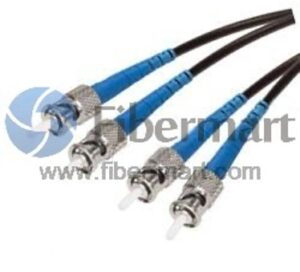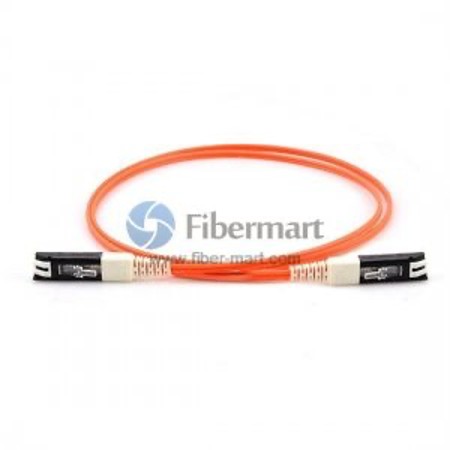Patch cables are undoubtedly one of the most important components when it comes to the smooth operation of electronic and optical equipment. The patch cable bulk, whether fiber optic or ethernet patch cable, enables the systems to work at intended high speeds and bandwidths.
Fiber patch cables can carry enormous volumes of data at high speed, making them ideal backbones for almost all networks. They connect everything from laptops to data centers to countries and towns.
However, given the wide variety of fiber patch cables, precise installation requirements, and performance characteristics, many people feel perplexed about choosing the right ones for their operations. Adept professionals at Fibermart share insights into what you need to know about fiber patch cables.
What is Fiber Patch Cable?
The phrase patch is derived from ‘patch-in,’ meaning the cables patch signals from one hub or switch to another router or hub. The cable has two ends that help connect the end device to the power source.
Patch cables are generally categorized into Ethernet patch cables and fiber patch cables. They’re widely employed for short-distanced connections, especially in corporate settings. Meanwhile, ethernet network cables are more suitable for connecting computers to the Ethernet switch or a network hub.
Fiber optic patch cables have connectors—MU, FC, ST, SC, LC, MTRJ, and more—at either end. The connectors enable the fiber catch cable to remain securely attached to the optical switch or another computing equipment.
Patch cables are suited for data centers, server rooms, mechanical engineering, medical imaging, telephone lines, cable TV networks, LAN, and other applications. Since most manufacturers use slightly different techniques to permit optimal performance, make sure to check all specifications before selecting the right one for your project. If you need assistance, the proficient team at Fibermart is just a call away!
Fiber optic patch cables are also known as jumper cords. They can be assembled with a fiber optic cable terminated at every end. The pre-terminated end connectors allow them to be connected conveniently to an optical switch, CATV, or other telecommunication equipment. These cables connect a receiver, terminal box, or optical transmitter.
The cables are available in two types: Multimode patch cables and single-mode patch cables. The latter refers to the cord that supports a single light signal. This type of patch cable is suitable for high-speed data transfer, designed to provide extensive broadband connections.
Meanwhile, the multimode fiber patch cable supports multiple light signals and can be used when carrying more than one signal through a single piece of cabling is essential. The primary difference between both patch cables lies in their core size.
The singlemode cable’s core is relatively smaller than that of the multimode cable, making them more useful in situations requiring long-distance transmissions. Singlemode cables are better suited for home networking setups and enterprise networking applications with high-speed internet.
The Importance of Fiber Patch Cables
Benefit #1- Transmission Speed
Fiber optic patch cables provide a much higher transmission speed compared with copper cables. The speed of transmission can be up to 100 Gbps for multimode fiber cables and 400 Gbps for singlemode ones.
Benefit #2- Transmission Distance
The fiber optic patch cables can be connected to devices that may be far away from one another as they’re made of optical fibers that could be transmitted very far underwater or in the air. For instance, multimode fiber cables could be extended up to two kilometers, whereas singlemode cables can be extended over 150 kilometers under ideal conditions.
Benefit #3- High Noise Immunity and Low Attenuation Rate
Fiber patch cables are immune to radio frequency interference (RFI) and electromagnetic interference (EMI). They offer the lowest attenuation loss among many types of connectors, making them more reliable than copper variants.

Benefit #4- Tiny Strands
Fiber cables have the same diameter as human hair. However, their data transmission capabilities outweigh that of the copper cables. The copper cables are typically up to four-time wider and transmit only a fraction of the data.
Meanwhile, fiber optic cables are more flexible, lighter, and easier to install and manage as they take up less room. The extra space enables extra cooling and allows more accessible access to the connected equipment. The design is also more pleasant.
Buy High-Quality Fiber Patch Cables at Fibermart
Patch cables vary in terms of polish, connectors, fiber count, jacket material, and length. Consult professionals at Fibermart to save time and money while streamlining the right solutions for your project.
Fibermart takes pride in offering premium quality patch cables that not only meet but also exceed all compliance and industry standards. They’re shipped after stringent quality checks to ensure you get the best value for your money.
Besides top-notch fiber patch cables, the company also offers quality MTP and MPO cables, fiber trunk and breakout cables, optical amplifiers, DWDM modules, fiber couplers, quick connectors, PLC splitters, fiber optic adaptors, LC and SC cables, and more.
Connect with their representatives to learn how the company’s state-of-the-art connectivity solutions can help you stay ahead of the networking curve.


